by Dan Weisz
Wild At Heart is a rescue, rehab, and release center for Birds of Prey located in Arizona. One of the many programs they offer include the rescue and release of Burrowing Owls. For more about this wonderful program, check out this page on their website: https://wildatheartraptors.org/recovery-programs/ Burrowing Owls used to be common among the colonies of prairie dogs and other burrowing animals. Their habitat and range have been severely impacted by development and agriculture which destroyed many of those prairie dog colonies. However these owls respond well to reintroduction programs and have benefited from protective legislation.
Because Burrowing Owls are out and about during the day and not hidden among the thick branches of trees, their visibility makes them a fascinating owl to observe.
These shots are from the burrows that Wild at Heart placed on city property in an agricultural area north of Marana. I helped to “dig” these burrows last November. The owls were introduced to these burrows in April under protective tents, and then the tents were taken down in May. There were eggs in several of the burrows at that time and we are now seeing the result of those birds hatching.
One of the burrows from a distance.
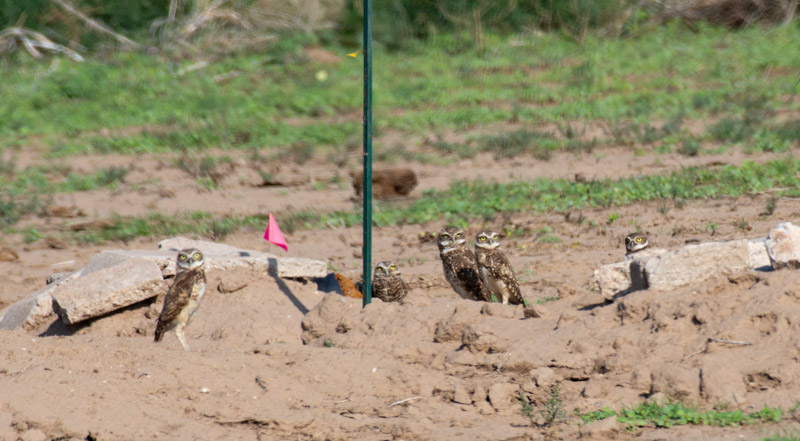
An adult with identification bands on both legs. Burrowing owls have long legs, short tails and do not have the ear tufts that many other owls have. The adults have white eyebrows and a white throat and the breast is heavily spotted.
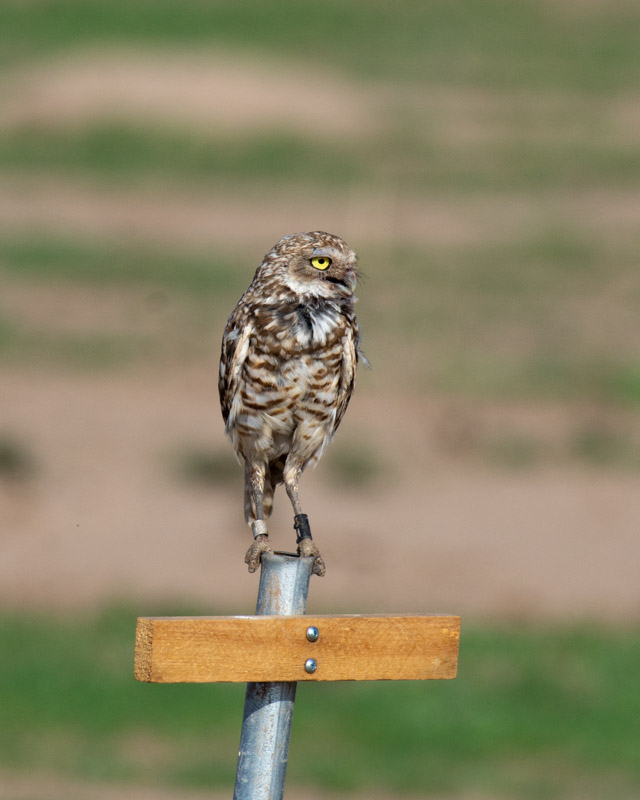
Two different youngsters below. Note their white breasts and softer look. They have only recently emerged from the nest burrows. Neither is wearing bands on their ankles because they are wild born and never lived in ‘rehab’.
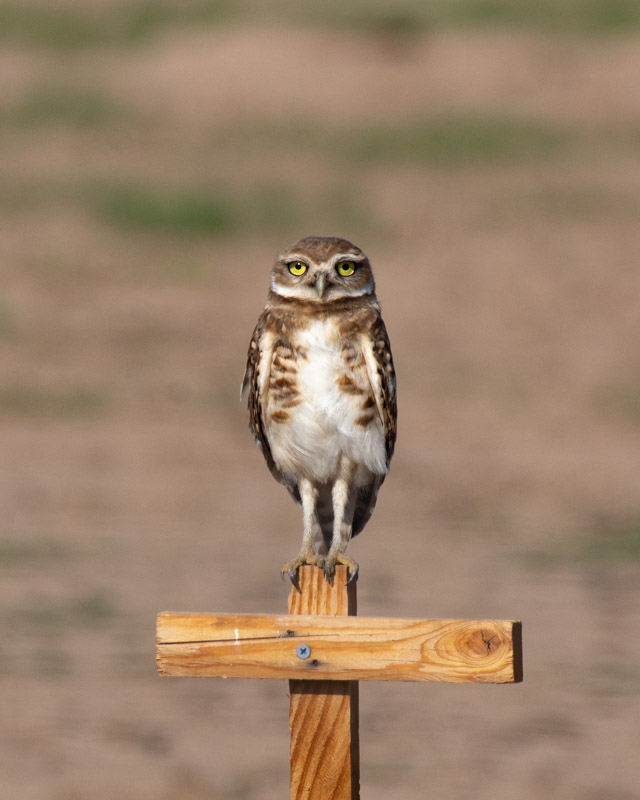
This bird’s pose is the same as the bird above, but notice the difference in feathering on its breast. It is probably a bit younger than the bird above with only two ‘adult’ feathers now showing.
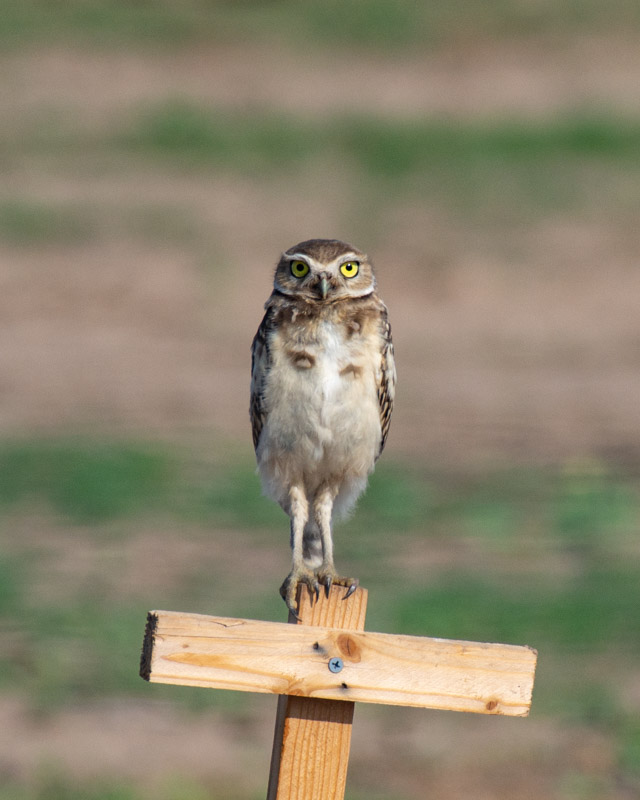
An adult on one of the burrows.
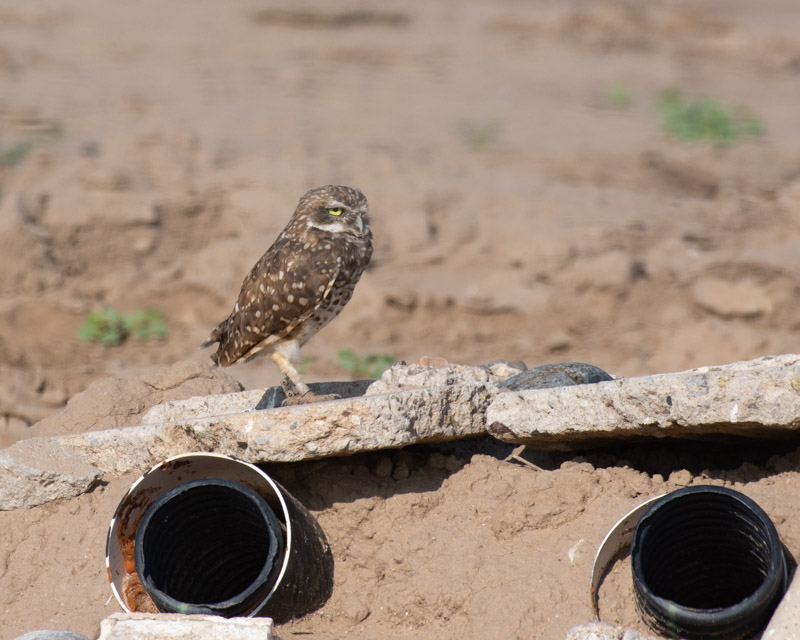
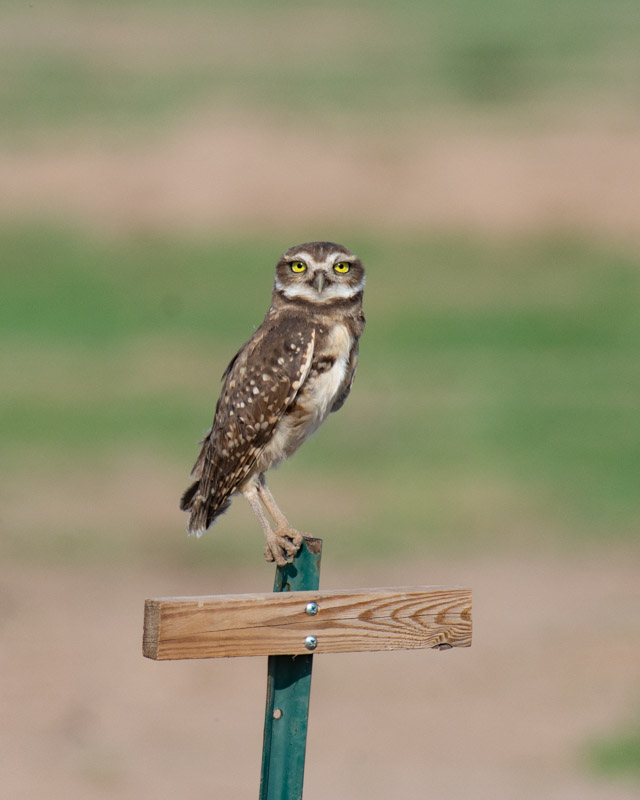
These photos were taken early in the morning. The owls tend to be more active early in the day or late in the afternoon. They will hunt during the day as well as at night. The agricultural fields around them ensure a rich source of insects along with lizards and small rodents. The town of Marana has been very supportive of maintaining a good Burrowing Owl population as you can see at their website:
https://www.discovermarana.org/blog/the-most-unusual-owls-in-marana/
I also visited a few other sites where Burrowing Owls are present in Marana. Those photos will be in another email.
Return to Foothills Clusters Home
